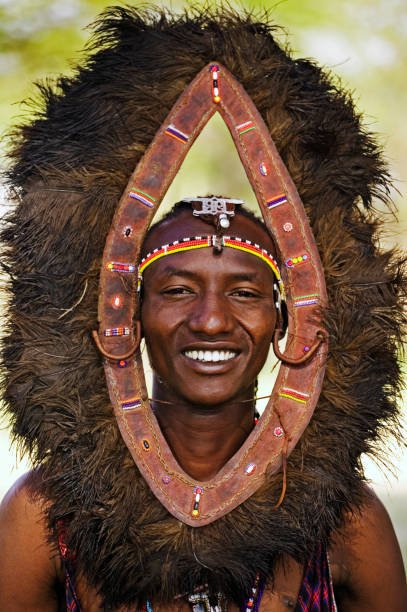The Story of the Maasai
By Prosper-Michael Ametu
The Maa-speaking people of East Africa, the Maasai, are Nilotic speakers rich in culture and history. From their vibrant shukas to riveting tales of how the first Maasai people were created this particular group has all the makings of an indigenous group that is resilient to the cultural shifts of the people around them. The Maa people occupy Northern, Central and Southern Kenya and northern Tanzania. The Maasai people believe traditionally that God (known as Enkai to them) created three groups of people the Torrobos, Kikuyus and the Maasai who slid down from heaven on a rope. Variants of the legend indicate that the rope was a symbol of the pastoralist nature of the community. This belief could be said to be the justification for the various raids carried out by the Morans who are the Maasai warriors. This culture has however died out with time.
The Maasai people have tied their identity to their culture. While the most famous aspect of their culture might be their vibrant colored dress or their high jumps and melodious songs, other aspects such as the Emanyattas, Emuratas and Oloibon are just as important. The Emanyattas are ceremonial dwelling places that are built by women, the Emurata is a rite of passage for young girls that is, done through genital mutilation. Female circumcision and early marriages have been a predominant part of the Maasai culture. The government has urged the community and others that practice Female genital mutilation to adopt other forms as their rite of passage. They have depended on cattle not just for food but as a symbol of their status, the more cattle you have the richer you are. Blood from the cattle is also used during rituals for drinking or smearing. For spiritual purposes, the Maasai have the position of the Oloibon that dates back centuries. This individual heals people while guiding community leaders.
Source: https://www.gettyimages.com/
Like all indigenous groups around the world, the people of Maa have been fighting over their land since they settled there after the migration of the Nilotes. The customary land holding of the Maasai is dependent on long occupation, colonial treaties dating back to Lenana, continued use and the group of representatives Land act adopt after independence. Despite all this, the group is pushed out of the land they know they own but stated otherwise on paper. They first had to fight the white settlers who took up most of their land in areas such as the current-day Nairobi. The term Nairobi originated from the Maasai phrase Enkare Nyrobi which when translated means cool waters. The land was held in trust by the crown after independence and eventually by the Kenyan government. Strips of land are owned over time by private individuals sold by the government which has led to more expropriation of the Maasai land. This group now occupies the Northern parts of Kenya that are plagued by drought and poverty that is a consequence of dying cattle. From having Nairobi taken by colonizers to be used to set up shops due to conducive weather and a station for the railway workers to at present having received tokens of their land that they lack control over, it is fair to say that this is a group that deserves better.
Source: https://www.gettyimages.com/
The Maasai have managed to uphold their cultural identity while selectively responding to progressive ideas such as ranching and alternative rites of passage. However, it still leaves one wondering, is it fair to expect people to be satisfied with tokens of that which is theirs?
Source: https://www.gettyimages.com/





